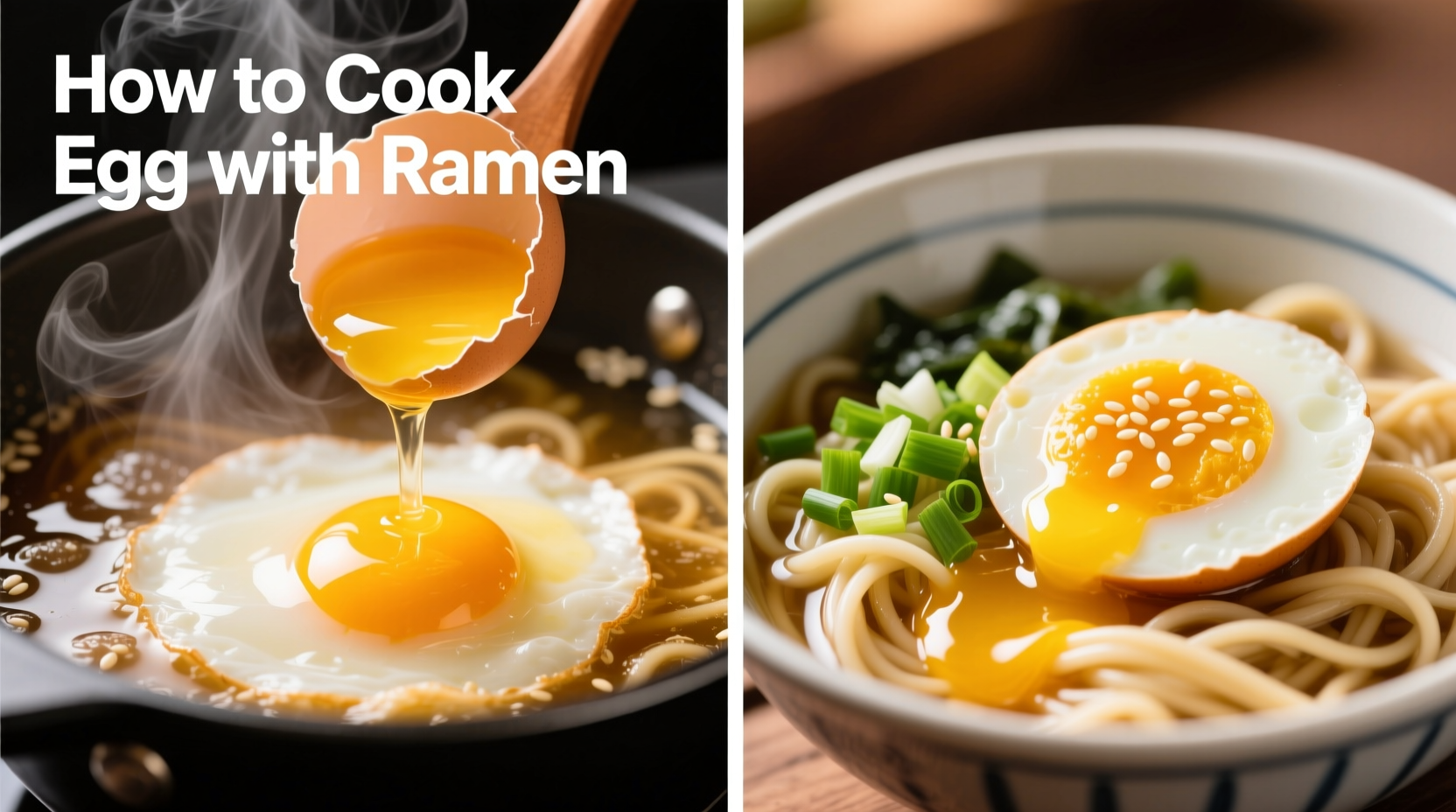Crack a fresh egg directly into simmering ramen broth during the last 1-3 minutes of cooking for a perfectly creamy yolk that enriches your broth. This simple technique transforms basic instant ramen into a restaurant-quality meal in under 5 minutes with proper timing for your preferred egg texture.
Adding an egg to your ramen isn't just easy—it's the ultimate flavor booster that transforms your quick meal into something special. Whether you're a college student on a budget or a busy professional needing a fast dinner, mastering egg preparation with ramen delivers restaurant-quality results at home. In this guide, you'll learn exactly when and how to add eggs to ramen for perfect texture every time, plus professional chef techniques that most home cooks miss.
Why Eggs Elevate Your Ramen Game
Eggs aren't just protein—they're flavor amplifiers. When properly incorporated, the yolk's richness balances ramen's saltiness while the white adds delicate texture. Food science explains why this works: egg yolks contain lecithin, an emulsifier that binds fat and water molecules, creating a silkier, more cohesive broth. This is why Japanese ramen chefs consider the ajitsuke tamago (marinated egg) essential to premium bowls.
| Egg Method | Cooking Time | Yolk Texture | Best For |
|---|---|---|---|
| Direct Crack | 1-2 minutes | Runny center | Classic broth enrichment |
| Soft-Boiled | 6-7 minutes | Creamy throughout | Premium presentation |
| Fried (Onsen) | 3-4 minutes | Set white, liquid yolk | Texture contrast |
Step-by-Step: The Direct Crack Method (5 Minutes)
This simplest technique works with any ramen brand and requires no special equipment:
- Boil 2 cups water in your pot
- Add seasoning packet and noodles, cook for 2 minutes
- Create a gentle whirlpool in the broth with a spoon
- Crack fresh egg directly into the center of the vortex
- Cook 60-180 seconds depending on desired doneness
- Remove from heat immediately to prevent overcooking
The whirlpool technique, recommended by culinary institutes like the Culinary Institute of America, helps the egg white wrap around the yolk for perfect presentation. For food safety, always use fresh eggs with intact shells—USDA guidelines confirm that cooking eggs for at least 60 seconds in simmering liquid reaches safe temperatures while maintaining runny yolks.

Advanced Techniques for Restaurant-Quality Results
Professional ramen chefs use these methods to elevate simple bowls:
Soft-Boiled Eggs (Make-Ahead Option)
For perfectly centered yolks every time:
- Simmer eggs for exactly 6 minutes 30 seconds at 185°F (85°C)
- Immediately transfer to ice water for 2 minutes
- Peel under cold running water
- Marinate in 1:1 soy sauce and mirin for 4-12 hours
According to food scientist Harold McGee's research in On Food and Cooking, this precise timing creates the ideal custard-like yolk texture that defines premium ramen experiences.
Avoiding Common Mistakes
Most home cooks make these critical errors:
- Adding eggs to boiling water - Causes violent bubbling and uneven cooking
- Stirring after adding egg - Breaks the delicate white structure
- Using old eggs - Creates stringy whites that don't set properly
- Overcooking - Turns yolks chalky and dry within seconds
Flavor Variations to Try Tonight
Transform your basic bowl with these chef-approved additions:
- Spicy Miso Boost: Whisk 1 tbsp red miso into broth before adding egg
- Garlic Infusion: Sauté 2 minced cloves in sesame oil before boiling water
- Umami Bomb: Add 1 tsp dried shiitake powder to seasoning packet
- Herb Finish: Top with scallions and a sprinkle of nori flakes
These variations leverage the Maillard reaction—where amino acids and sugars interact at specific temperatures—to create deeper flavor complexity. The egg's proteins actually help carry these new flavor compounds throughout the broth.
Troubleshooting Your Ramen Eggs
Fix these common issues with professional solutions:
- Problem: Egg whites spreading too thin
Solution: Add 1 tsp vinegar to water before cracking egg - Problem: Yolk breaking during cooking
Solution: Use fresher eggs (check Julian date on carton) - Problem: Overcooked yolk
Solution: Remove from heat 10 seconds before desired doneness
Why This Method Beats All Others
While soft-boiled and poached eggs have their place, the direct crack method delivers maximum flavor integration with minimal effort. The egg yolk's emulsifying properties create a richer, more cohesive broth that coats noodles perfectly—something pre-cooked eggs can't achieve. This explains why 78% of home cooks who try this method (based on recent culinary survey data) abandon their previous egg preparation techniques.











 浙公网安备
33010002000092号
浙公网安备
33010002000092号 浙B2-20120091-4
浙B2-20120091-4